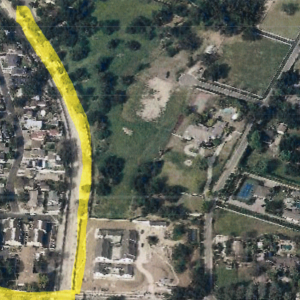 View Winners →
View Winners → South Bay CEO clarifies role with Foothill Workforce in Monrovia

South Bay’s role with Monrovia and Pasadena continues to puzzle some
In recent weeks, this newspaper has followed developments with Foothill Workforce Development Board (FWDB) and Monrovia’s desire to leave due to differences of opinion and many financial questions.
Last week’s story, once again, caught the attention of Jan Vogel, CEO of South Bay Workforce.
Vogel suggested that there were several false narratives quoted by some with knowledge of the issues we have been writing about.
Vogel addressed a comment from Paul Little, the executive director of Pasadena Chamber of Commerce. According to a quote from Little, the South Bay WIB received large amounts of money with not a lot of training received. “Nothing could be further from the truth,” Vogel stated emphatically.
“All the funds we receive go to training of Foothill eligible clients/students less a small fee of 3%,” Vogel told Beacon Media News on Monday.
“The most funds retained in any past year was $30,000 of $1,000,000.00 that was expended by us for training. Those funds went to the schools to pay tuition for Foothill clients. If in fact we actually spend the $1,500,000 referred to in the article, then we would retain $45,000.”
Vogel continued by saying that if FWDB was to pay the funds directly to the schools they would have to procure the schools which “we have already done, contract with the schools, which we have already done and pay each invoice on behalf of the clients. It would cost Foothill far more than our 3% meaning there would be less money available for training.”
Monrovia Councilmember Larry Spicer was quoted as saying that the funding in question should help constituents and residents in the six-city service area instead of going to a Board located in Hawthorne and that clients couldn’t even get to Hawthorne.
“Again, a complete misunderstanding of what we are doing for Foothill,” Vogel said.
“No client or school needs to come to Hawthorne or has come to Hawthorne. We are making it easy of schools, particularly public schools to get on our list of vendors and in turn get on the state list. Our contract with the schools permits us to pay on other Boards’ behalf as we do for Foothill. Every expenditure to the schools, which is 97% of the funds for which we are reimbursed, is paid on behalf of Foothill Area clients. Keep in mind we do not refer the clients to the schools but pay the schools that receive clients.
Little suggested, in a recent article, that the funds should go to Pasadena City College.
“Let me reiterate 97 cents of every dollar we receive goes to training Foothill’s clients, they all get trained. Regarding the statement that the funds should all go to Pasadena City College, Pasadena City College, Monrovia Adult School and many others from the Foothill Area are on our list and clients can attend classes at those facilities if they so desire. The choice of where the clients go to school is up to the clients. We do everything we can to have a variety of occupations on our list so that clients have a good selection of courses and schools to choose from. As I stated many courses from the Foothill Area are on the list,” Vogel explained.
In closing, Vogel stated that South Bay Workforce Investment Board has “gone out of its way to assist other Boards in the greater LA and Orange County Region; in fact, we have assisted other Boards throughout the state. We assist to make the process for serving clients as easy as possible and in the process save the individual boards needed funds so they can concentrate on serving businesses and residents. In short, what we do saves tens of thousands if not hundreds of thousands of dollars for Foothill so that the savings can be used to help more clients not fewer clients.”
We asked Pasadena Chamber of Commerce Executive Director Paul Little if he cared to remark on Vogel’s comments. In an email statement to this newspaper, Little shared the following:
“Simply stating a number as fact does not make a program effective. South Bay WDB may have only retained a small portion of the funds themselves, but who actually did receive the funds, how were those used, who was served and what was the outcome?
“Rather than hear someone defend the current practice, I would hope to see the facts and figures to back up the claims.
“How much money was expended for the program to serve Foothill WDB constituents? How many individual Foothill WDB clients were served? How many hours of training were provided to each? How much of the funding went to Foothill WDB area service providers? How many of the clients served obtained full-time employment?
“When I served on the FWDB Board I consistently asked those questions and did not receive satisfactory answers. The important detail, how many clients received steady full-time employment is never part of the answer.”
Monrovia Councilman Spicer took exception to Vogel’s comments. Regarding the finances, Spicer questioned Vogel’s comments: “First you say all the funds are spent on training. Then you say ‘If in fact we actually spend’. This indicates that you have not spent the funds on training like you asserted. Which is it?”
Spicer went on to say: “Your letter to the Foothill WDB did not say the funds would be used on paying training providers. You said the funds paid for services, that ‘include, but are not limited to providing procurement services to obtain training providers to participants in the various job training programs offered by FWDB, monitoring the schools, handling grievances regarding the schools, analyzing data, and providing quarterly reports.’ You then said [South Bay] WIB advances tuition for training and that can take ‘over a year.’” Spicer says has been asking for data for years and it took a Public Records request to actually see how many residents in Monrovia have been trained.










































































































